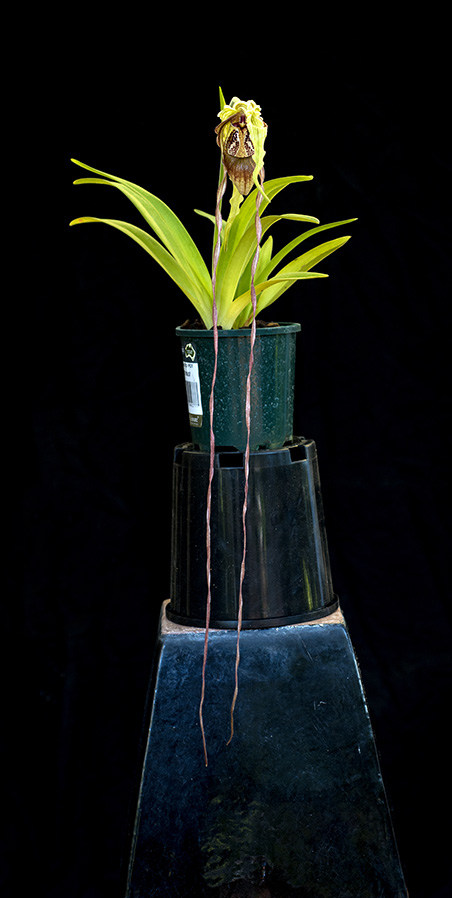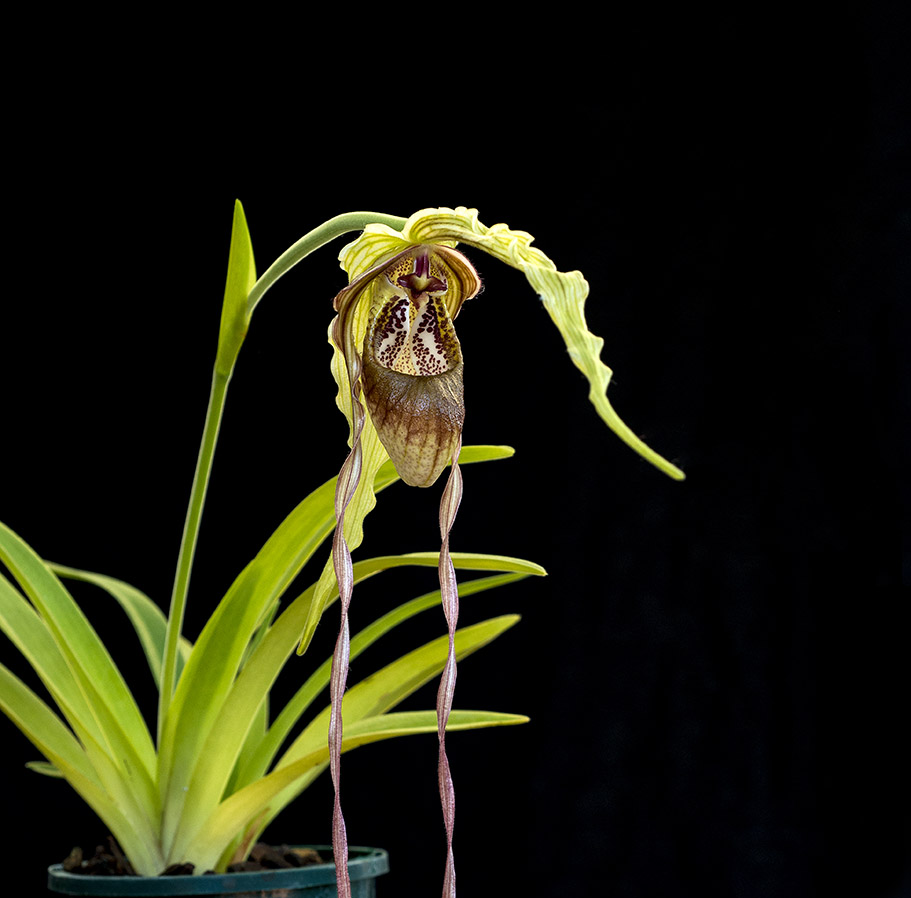The caudatum complex is a confusing mess, but the way I approach it is ...
If it's small and/or slender in stature, it's one of the following:
- P. humboldtii (formerly P. warscewiczianum, sometimes P. popowii) has dark flowers.
- P. exstaminodium has dark flowers but no staminode.
- P. warscewiczianum (formerly P. wallisii) has pale flowers.
- P. lindenii has pale flowers but no pouch (3 long petals instead).
Otherwise, everything else encompassing medium to large plants with pale to colorful flowers is lumped into P. caudatum, with several varieties like sanderae and giganteum.
Obviously size and flower color aren't the defining factors in how these are classified, but they're a good guide if you know you're looking at a species as opposed to a hybrid.















































